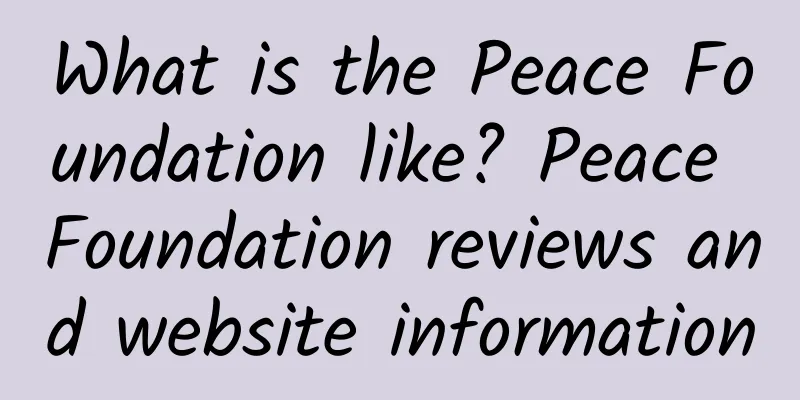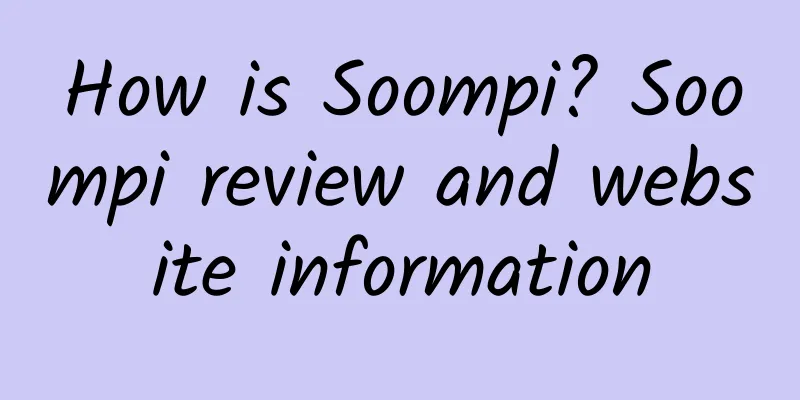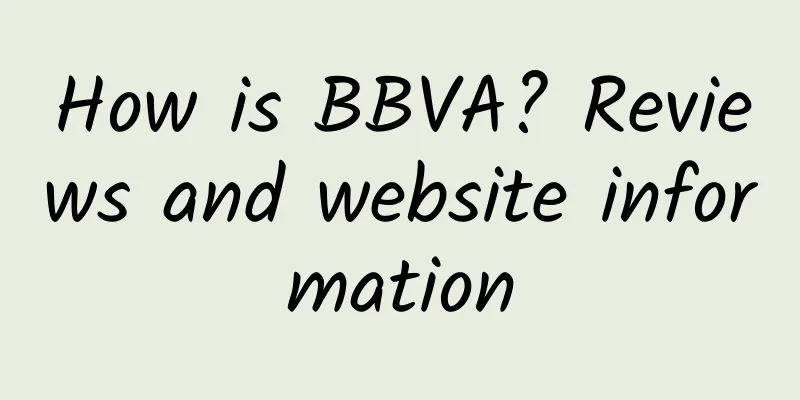What is the Peace Foundation like? Peace Foundation reviews and website information

|
What is the Fund for Peace website? The Fund for Peace (FFP) is a non-profit educational and research organization in the United States. It was founded in 1957 and is located in Washington, DC. It is dedicated to preventing wars and reducing conflicts. Website: fundforpeace.org The Fund For Peace (FFP) is a non-profit educational and research organization registered in the United States. Its core mission is to prevent war, reduce conflict and promote peace through in-depth research, innovative methods and global cooperation. As an institution with more than 60 years of history, the Fund for Peace has been committed to exploring and solving complex problems in the field of global security and stability since its establishment in 1957. Its headquarters is located in Washington, DC, which enables it to cooperate more effectively with the US government, international organizations, academia and other non-governmental organizations. The Fund for Peace works at multiple levels, including policy recommendations, field project implementation, data-driven analysis, and public education. The organization is known for its unique Fragile States Index (FSI), a tool that assesses the political, social, and economic stability of countries based on a large amount of data and indicators. The FSI is published annually and helps decision makers, scholars, and the general public better understand the dynamics of global conflicts and their potential causes through detailed analysis of 178 countries. In addition to the Fragile States Index, the Peace Fund is actively involved in various projects aimed at reducing violent conflict and promoting sustainable development. For example, it conducts community building activities around the world, supports local leadership development, and provides educational and economic opportunities for residents in conflict-affected areas. In addition, the Peace Fund also works closely with international organizations such as the United Nations and the World Bank to jointly develop strategies to address global challenges. As an independent non-governmental organization, the Fund for Peace draws on a variety of funding sources, including private donations, foundation grants, corporate sponsorship, and government grants. This diverse funding structure ensures the independence and flexibility of its work, while also enabling it to remain relevant and influential in an ever-changing geopolitical environment. For those who want to learn more about global peace and security issues, visiting the official website of the Fund for Peace ( fundforpeace.org ) is an excellent starting point. In addition to the latest report on the Fragile States Index, the website also contains a series of articles, case studies and multimedia resources to help users fully understand the work of the Fund for Peace and its contribution to the cause of global peace. In short, the Peace Foundation is not just a research institution, it is also a bridge connecting theory and practice, promoting the realization of a more peaceful and just world through scientific methods and firm beliefs. The core goals of the Peace Foundation can be summarized in three main aspects: preventing war, reducing conflict and promoting peace. These goals not only reflect the purpose of the organization, but also reflect the important role it plays in global affairs. The following will introduce these three goals and their specific meanings in detail: First, preventing war is one of the most direct goals of the Peace Fund. To achieve this goal, the Peace Fund has invested a lot of resources in the development and application of early warning systems. By collecting and analyzing data from all over the world, the organization is able to identify potential factors that may trigger war, such as political instability, economic inequality, and social divisions. This information is used to produce the annual "Fragile States Index", which provides a clear picture for policymakers and the international community to take preventive measures to avoid the escalation of conflicts. Secondly, reducing conflicts is another key goal pursued by the Peace Foundation in practice. This involves a series of specific interventions aimed at easing existing tensions or conflicts. The Peace Foundation works with local governments, non-governmental organizations and community groups to design and implement various projects to strengthen social cohesion, improve governance structures and promote economic development. For example, in some conflict-prone areas, the Peace Foundation supports the establishment of dialogue platforms so that different stakeholders can sit down and negotiate solutions, thereby reducing hostility and violence. Finally, promoting peace is the ultimate goal of all the efforts of the Peace Foundation. This is not just as simple as stopping wars or eliminating conflicts, but creating a long-term peaceful environment where people can live and develop without fear and oppression. To this end, the Peace Foundation emphasizes the importance of education, believing that only when people have sufficient knowledge and skills can they effectively participate in social affairs and make choices that are conducive to peace. At the same time, the organization also advocates understanding and respect between cultures and encourages cross-border cooperation and exchanges to build a more inclusive and harmonious world. In summary, the Peace Foundation systematically advances its mission through the three interrelated goals of preventing war, reducing conflict, and promoting peace. Each goal corresponds to a specific strategy and action plan to ensure that its work is both targeted and effective. It is this comprehensive and in-depth approach that has enabled the Peace Foundation to occupy an important position in the field of international peace and development. The Peace Foundation's operating model is unique and efficient, combining a variety of resources and methods to ensure that its mission can be achieved globally. First, the organization relies on a strong research capacity, which is the foundation of all its activities. The Peace Foundation has a team of experts with deep expertise in fields such as international relations, political science, economics, and sociology. These researchers are not only responsible for producing high-quality academic papers, but also developing practical tools such as the "Fragile States Index" to measure and predict the stability of countries. This data-driven research approach provides policymakers with valuable references to help them better understand and respond to complex global challenges. Secondly, the Peace Foundation focuses on cooperation with other organizations to form a broad network of partnerships. These partners include government agencies, international organizations, academic institutions and other non-governmental organizations. Through this collaboration, the Peace Foundation is able to integrate the advantages of all parties and expand its influence. For example, cooperation with the United Nations enables the Peace Foundation to participate in discussions on the global peace and security agenda; cooperation with the World Bank helps its projects obtain the necessary financial support and technical guidance. In addition, the Peace Foundation also actively establishes connections with local communities to ensure that its projects can truly meet local needs and have a lasting impact. Furthermore, the Peace Foundation adopts a comprehensive project implementation method, covering all levels from policy consultation to field operations. In its work, the organization not only provides strategic advice, but also personally participates in the implementation of specific projects. For example, in some post-conflict reconstruction areas, the Peace Foundation will send staff to help restore basic services, promote social reconciliation, and train new leaders. This approach ensures a close connection between theory and practice and increases the possibility of project success. Finally, the Peace Foundation attaches great importance to capacity building and knowledge dissemination. The organization regularly organizes seminars, training courses and public lectures to popularize knowledge about peace and security to the public. At the same time, it is also committed to cultivating the next generation of peace builders, providing a platform for young professionals to learn and grow through scholarship programs and internship opportunities. This investment in the future ensures that the cause of peace can continue to receive attention and support. Overall, the Peace Foundation has established an effective operating model through its rigorous research, extensive cooperation, comprehensive project implementation, and sustained educational outreach, which not only enhances its own capabilities but also sets an example for other organizations doing similar work. The Fund for Peace's Fragile States Index (FSI) is a groundbreaking and far-reaching global assessment tool. The index was first published in 2005 and was originally called the Failed States Index. It was later renamed the Fragile States Index to more accurately reflect its assessment content and objectives. By analyzing the social, economic and political conditions of 178 countries, the FSI provides a detailed global security and stability map to help policymakers, scholars and the public better understand the causes and consequences of state fragility. The core of FSI lies in its data-driven methodology. The index is evaluated based on 12 key indicators covering multiple dimensions such as national governance, economic conditions, and social pressures. These include public security, human rights, refugee flows, economic inequality, and state legitimacy. Each indicator is assigned a certain weight and scored using quantitative and qualitative data. In the end, all scores are summed up to produce a total score that measures the overall fragility of a country. The higher the score, the more fragile the country is; conversely, it means it is more stable. The value of FSI is not only reflected in its assessment results, but also in the fact that it provides an important reference framework for global peace and security research. Through the accumulation of data over many consecutive years, FSI reveals the trend of state fragility over time and provides valuable information for predicting future conflict risks. For example, some countries with high scores in economic inequality may indicate increasing social discontent and, in turn, increase the likelihood of civil unrest. In addition, FSI can also help identify which countries or regions need priority attention and assistance, so that limited resources can be allocated more effectively. However, the FSI is not perfect. Since it relies on publicly available data and media reports, there may be information bias or omissions. At the same time, the definition and calculation methods of some indicators may also cause controversy. Nevertheless, the FSI is still one of the most authoritative and widely recognized national vulnerability assessment tools. It not only serves academic research, but also provides strong support for actual policy making. Overall, the Fragile States Index is a landmark achievement of the Peace Foundation, demonstrating the organization's outstanding capabilities in data science and global governance. Through this tool, the Peace Foundation has successfully transformed the abstract concept of peace into concrete and actionable indicators, making an indelible contribution to the cause of global peace. The Peace Foundation has made many remarkable achievements in the field of global peace and security, which not only proves the effectiveness of its mission, but also provides valuable practical experience for the international community. The following will list several key cases and projects to demonstrate the specific role and influence of the Peace Foundation in promoting the peace process. First of all, it is worth mentioning the Fund for Peace's conflict prevention work in the Sahel region of Africa. This region has long been affected by factors such as extremist violence, climate change and poverty, leading to frequent conflicts and humanitarian crises. In response to these problems, the Fund for Peace has launched a series of comprehensive projects aimed at strengthening local governance capacity and community resilience. For example, by working with local leaders, the Fund for Peace has helped establish a cross-border dialogue mechanism to promote communication and cooperation between different ethnic groups. At the same time, the organization also supports the participation of women and youth groups in the decision-making process, enhancing their social status and influence. These initiatives have significantly reduced tensions in the region and laid the foundation for long-term peace. Secondly, the Peace Foundation has also played an important role in post-conflict reconstruction in the Middle East. Especially in Iraq and Syria, facing the ruins and trauma left by the war, the Peace Foundation focuses on psychological rehabilitation and social reconstruction. In cooperation with local non-governmental organizations, the organization has set up many mental health centers to provide support for children and families affected by the war. In addition, the Peace Foundation also assists in restoring the education system to ensure that children can return to school and regain a normal life. This people-oriented intervention not only repairs the damaged social structure, but also inspires local residents' hope for the future. Another noteworthy example is the Peace Foundation's reconciliation project in South Sudan. As one of the youngest countries in the world, South Sudan has been mired in a continuous civil war since its independence. To meet this challenge, the Peace Foundation, in collaboration with the United Nations and other international partners, launched a program called "Peace Messengers". The project selects and trains a group of community leaders from different tribes and backgrounds to become disseminators of the culture of peace. These peace messengers then return to their communities and gradually change the way the locals think by organizing dialogue meetings, mediating disputes, and promoting peace values. After several years of efforts, the project has achieved significant reconciliation results in many areas, injecting new impetus into South Sudan's peace process. In addition to the above specific cases, the Peace Foundation has also carried out a number of innovative research and initiatives around the world. For example, the Youth Peacebuilders Network initiated by the organization aims to connect young people from all over the world, encourage them to share experiences and jointly explore how to resolve conflicts. This network not only provides young people with an opportunity to speak out, but also cultivates a group of emerging peace leaders and reserves talents for future peace causes. In summary, the achievements of the Peace Foundation demonstrate its strong strength in conflict prevention, reconciliation promotion and community reconstruction. These cases not only verify the effectiveness of its methods, but also provide experience for other countries and regions to learn from. Through unremitting efforts and innovative thinking, the Peace Foundation is gradually realizing its vision of creating a more peaceful world. The future outlook for the Peace Foundation is filled with both potential and challenges, especially in today’s rapidly changing global environment. As technology advances, the geopolitical landscape evolves, and new forms of conflict emerge, the Peace Foundation must continually adapt its strategies and approaches to new needs and opportunities. Here are some key directions the organization may take in the future: First, the Peace Foundation will further deepen its digital transformation and make full use of big data and artificial intelligence technologies to improve analytical capabilities and decision-making efficiency. By introducing advanced algorithms and machine learning models, the organization can more accurately predict conflict risks and provide more forward-looking advice to policymakers. For example, using social media data to monitor public opinion trends can help detect social sentiment fluctuations that may lead to violence early. In addition, the Peace Foundation can also develop interactive online platforms to allow more people to participate in the process of peacebuilding, whether through donations, volunteer services or knowledge sharing. Secondly, the Peace Foundation will strengthen its research on the connection between climate change and security issues. As global warming brings with it resource shortages, migration waves and natural disasters, these factors have become important triggers for triggering or exacerbating conflicts. Therefore, the Peace Foundation plans to expand its research areas to explore how to alleviate these pressures through sustainable development. This may involve cooperation with environmental organizations, scientists and technical experts to jointly find innovative solutions, such as green energy projects or water resource management plans. Furthermore, the Peace Foundation will continue to strengthen its influence in emerging markets and technology. With the rise of regions such as Asia, Africa and Latin America, peace and stability in these regions are crucial to the global order. The Peace Foundation hopes to enhance its presence and responsiveness in these regions by establishing local branches, cultivating local talents and carrying out customized projects. At the same time, with the rise of new technologies such as digital currency and blockchain, the Peace Foundation is also exploring how to use these tools to improve fund management and project execution efficiency. Finally, the Peace Foundation will place greater emphasis on cross-border cooperation and multi-stakeholder participation. Recognizing that it is difficult for a single organization to address complex global challenges alone, the organization will actively promote the establishment of a broader alliance, including governments, the private sector, academia, and civil society. In this way, the Peace Foundation can not only obtain more resources and support, but also ensure that its work is closer to actual needs and has a long-term impact. In short, the future of the Peace Foundation is full of infinite possibilities. By embracing technological innovation, paying attention to climate change, cultivating emerging markets and strengthening multilateral cooperation, the organization will continue to play a leading role in global peace and security and contribute to the realization of a more harmonious and beautiful world. |
>>: How is Principal Financial Group? Principal Financial Group reviews and website information
Recommend
The role and consumption of walnut shells
Everyone must be very familiar with walnut shells...
The efficacy and function of okra flowers
Okra is a food that most people have eaten. Peopl...
How to make delicious spicy beef sauce Ingredients and steps for spicy beef sauce
In the hot summer, people like to eat some noodle...
How to ripen guava? Methods and techniques for ripening guava
Guava, also known as guava, is a fruit produced i...
How to cook red beans for desserts How to cook red beans for milk tea
In life, many people like to use red beans to mak...
The pros and cons of eating raw onions
I believe everyone is familiar with onions. Wheth...
How is Ghent University? Ghent University reviews and website information
What is the website of Ghent University? Ghent Uni...
The harm of eating betel nut
Areca nut is the mature seed of the palm plant Ar...
How to soak kiwi in wine How to soak kiwi in wine
Many people know that kiwi can be soaked in wine,...
The benefits of eating white chayote
The common chayote is green and has a light taste...
How is the Swiss Embassy in China? Reviews and website information of the Swiss Embassy in China
What is the website of the Swiss Embassy in Beijin...
The efficacy and function of Begonia sempervivum
Four-season begonia, also known as four-season be...
Nutritional value and efficacy of pea paste
Peas, also known as snow peas, are a nutritious l...
How is Brazil Agricultural TV? Brazil Agricultural TV reviews and website information
What is the website of Brazilian Agricultural TV? ...
How to make vegetable juice Ingredients and steps for making vegetable juice
In recent years, detoxification is a term that we...









